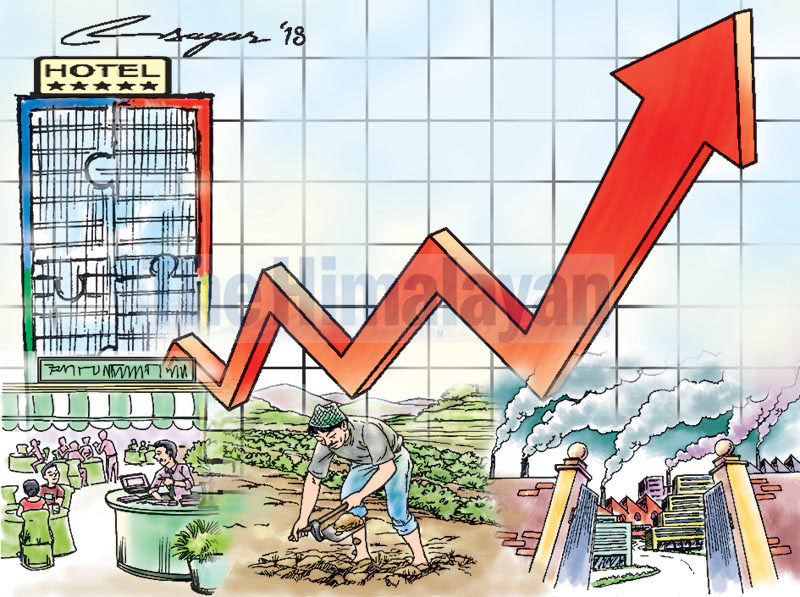Govt projects 2.3 per cent economic growth for this fiscal
- Per capita income to increase to Rs 126,018
- Despite joblessness absolute poverty to decline
KATHMANDU, MAY 26
Halt in economic activities as a result of the lockdown that the government has imposed to control the spread of the COVID-19 contagion was expected to hit the country's economic growth. In keeping with this expectation, the government today predicted an economic growth rate of a mere 2.3 per cent for the current fiscal year 2019-20.
Presenting the Economic Survey report of the ongoing fiscal, which is based on statistics of the first eight months (till mid-March), Finance Minister Yubaraj Khatiwada said though all economic indicators till mid-March were positive, the spread of COVID-19 had affected the entire economy since its outbreak and would bring down the annual growth to the given level.
Initially, the government had projected an ambitious 8.5 per cent economic growth for the current fiscal.
“All economic indicators, including inflation, foreign trade, balance of payments, investment and financial indicators, had been positive before the spread of coronavirus. However, these indicators have been affected since the spread of the virus which will ultimately shrink the overall economic growth rate for the year,” said Khatiwada.
Meanwhile, the per capita income of Nepalis (at current price) has been estimated to increase by 7.5 per cent this year to $1,085 or Rs 126,018 compared to the last year. The survey has also estimated the ratio of gross consumption and gross household savings to GDP to be 81.9 per cent and 18.1 per cent, respectively, in the current fiscal.
The Economic Survey estimates that absolute poverty, which remained at 18.6 per cent in the last fiscal, will, however, come down to 16.67 per cent of the population by the end of the current fiscal although the nationwide lockdown has rendered countless people jobless.
As a result of contraction in both public and private expenditure due to the spread of COVID-19, overall investment in the current fiscal has been projected to decrease by 3.4 per cent to Rs 1.89 trillion compared to the previous year.
The government received foreign investment commitment worth Rs 178 billion in the first eight months of the current fiscal against Rs 11.18 billion foreign investment commitment that the country had received during the same period last year.
As per the survey report, the total government expenditure increased by 12.9 per cent in the first eight months of the current fiscal to Rs 610.68 billion compared to the same period of the previous year. While recurrent expenditure till mid-March stood at Rs 450.78 billion, capital expenditure stood at Rs 96.48 billion and expenditure under financing stood at Rs 63.42 billion.
The government has also estimated that the country’s tourism sector, which grew at 7.33 per cent last year, will witness negative growth of 16.3 per cent in the current fiscal. While the growth rate of fisheries, electricity, gas and water, health and social work and public administration and defence will be notable this year as these sectors have not been adversely affected by the pandemic, all other sectors are expected to witness tepid growth, adds the economic survey report.
It stated that access to electricity had increased to 90 per cent of the population, while 78 per cent of the population had access to electricity till last year.
The report also states that the government constructed 129 bridges till mid-March this year.
While provincial governments blacktopped 3,950 kilometres of roads, the federal government blacktopped 559 kilometres of roads during the given period.
A version of this article appears in e-paper on May 27, 2020, of The Himalayan Times.






